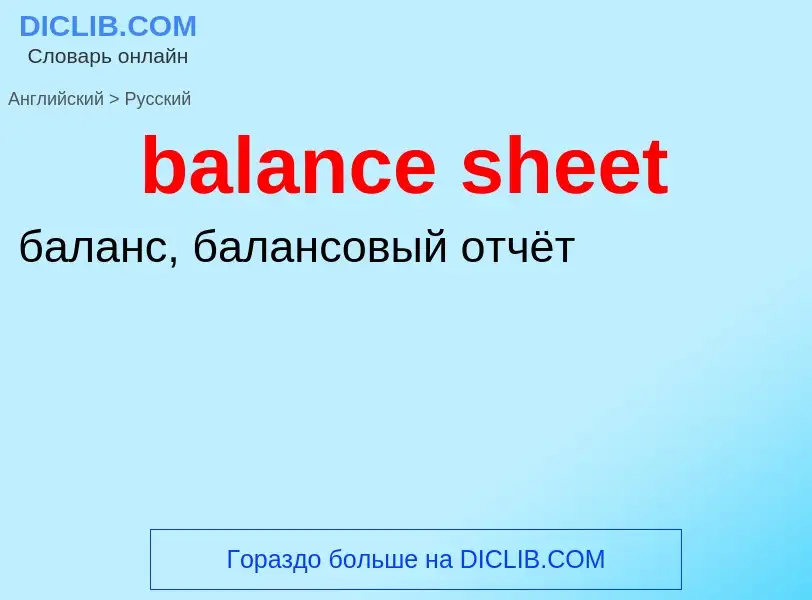Translation and analysis of words by artificial intelligence
On this page you can get a detailed analysis of a word or phrase, produced by the best artificial intelligence technology to date:
- how the word is used
- frequency of use
- it is used more often in oral or written speech
- word translation options
- usage examples (several phrases with translation)
- etymology
balance sheet - translation to russian
сокращение
BS
финансы
(бухгалтерский) баланс
балансовый отчет [лист]
балансовая ведомость (финансовый отчет, в котором отражаются активы и пассивы компании по состоянию на определенную дату; по структуре обычно представляет собой таблицу, на левой стороне которой указываются активы, на правой - собственный капитал и обязательства; активы и обязательства компании показываются в балансе с подразделением на долгосрочные и краткосрочные)
синоним
Definition
Wikipedia

In financial accounting, a balance sheet (also known as statement of financial position or statement of financial condition) is a summary of the financial balances of an individual or organization, whether it be a sole proprietorship, a business partnership, a corporation, private limited company or other organization such as government or not-for-profit entity. Assets, liabilities and ownership equity are listed as of a specific date, such as the end of its financial year. A balance sheet is often described as a "snapshot of a company's financial condition". It is the summary of each and every financial statement of an organization
Of the four basic financial statements, the balance sheet is the only statement which applies to a single point in time of a business's calendar year.
A standard company balance sheet has two sides: assets on the left, and financing on the right–which itself has two parts; liabilities and ownership equity. The main categories of assets are usually listed first, and typically in order of liquidity. Assets are followed by the liabilities. The difference between the assets and the liabilities is known as equity or the net assets or the net worth or capital of the company and according to the accounting equation, net worth must equal assets minus liabilities.
Another way to look at the balance sheet equation is that total assets equals liabilities plus owner's equity. Looking at the equation in this way shows how assets were financed: either by borrowing money (liability) or by using the owner's money (owner's or shareholders' equity). Balance sheets are usually presented with assets in one section and liabilities and net worth in the other section with the two sections "balancing".
A business operating entirely in cash can measure its profits by withdrawing the entire bank balance at the end of the period, plus any cash in hand. However, many businesses are not paid immediately; they build up inventories of goods and acquire buildings and equipment. In other words: businesses have assets and so they cannot, even if they want to, immediately turn these into cash at the end of each period. Often, these businesses owe money to suppliers and to tax authorities, and the proprietors do not withdraw all their original capital and profits at the end of each period. In other words, businesses also have liabilities.


